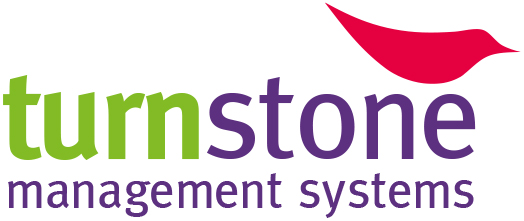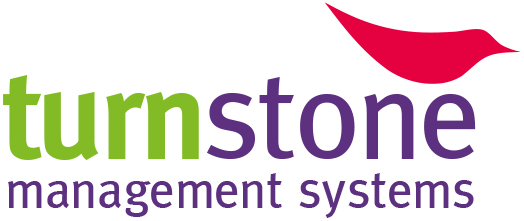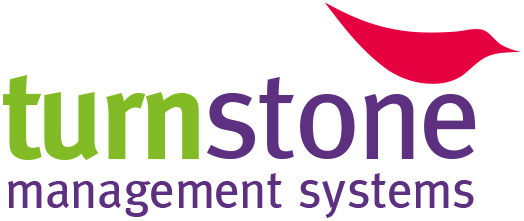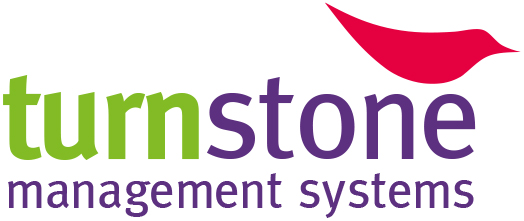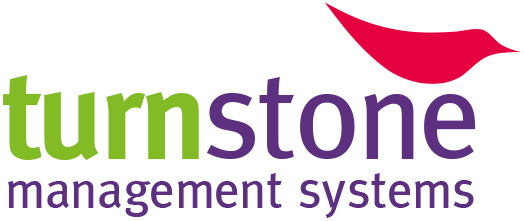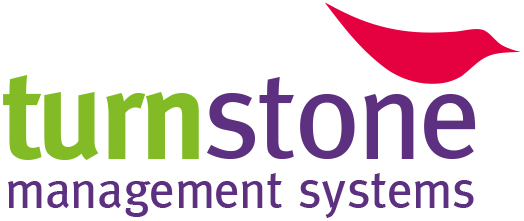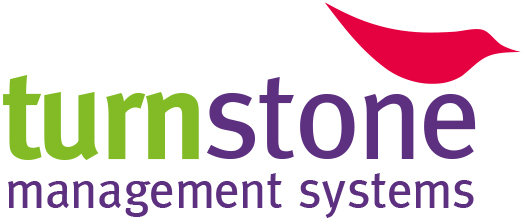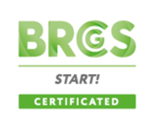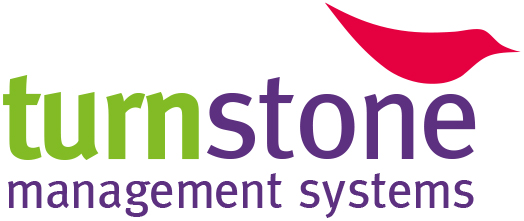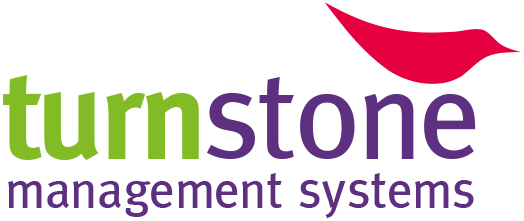Title Page
-
Site conducted
-
Conducted on
-
Prepared by
-
Location
-
Conformity assessment — Requirements for the operation of various types of bodies performing inspection
ISO/IEC 17020-2012 Audit Template
4 General requirements
4.1 Impartiality and independence
-
4.1.1 Inspection activities shall be undertaken impartially.
-
4.1.2 The inspection body shall be responsible for the impartiality of its inspection activities and shall not allow commercial, financial or other pressures to compromise impartiality.
-
4.1.3 The inspection body shall identify risks to its impartiality on an ongoing basis. This shall include those risks that arise from its activities, or from its relationships, or from the relationships of its personnel. However, such relationships do not necessarily present an inspection body with a risk to impartiality.<br>NOTE: A relationship that threatens the impartiality of the inspection body can be based on ownership, governance, management, personnel, shared resources, finances, contracts, marketing (including branding), and payment of a sales commission or other inducement for the referral of new clients, etc.
-
4.1.4 If a risk to impartiality is identified, the inspection body shall be able to demonstrate how it eliminates or minimizes such risk.
-
4.1.5 The inspection body shall have top management commitment to impartiality.
-
4.1.6 The inspection body shall be independent to the extent that is required with regard to the conditions under which it performs its services. Depending on these conditions, it shall meet the minimum requirements stipulated in Annex A, as outlined below.<br>a) An inspection body providing third party inspections shall meet the type A requirements of Clause A.1 (third party inspection body).<br>b) An inspection body providing first party inspections, second party inspections, or both, which forms a separate and identifiable part of an organization involved in the design, manufacture, supply, installation, use or maintenance of the items it inspects and which supplies inspection services only to its parent organization (in-house inspection body) shall meet the type B requirements of Clause A.2.<br>c) An inspection body providing first party inspections, second party inspections, or both, which forms an identifiable but not necessarily a separate part of an organization involved in the design, manufacture, supply, installation, use or maintenance of the items it inspects and which supplies inspection services to its parent organization or to other parties, or to both, shall meet the type C requirements of Clause A.3.
4.2 Confidentiality
-
4.2.1 The inspection body shall be responsible, through legally enforceable commitments, for the management of all information obtained or created during the performance of inspection activities. The inspection body shall inform the client, in advance, of the information it intends to place in the public domain. Except for information that the client makes publicly available, or when agreed between the inspection body and the client (e.g. for the purpose of responding to complaints), all other information is considered proprietary information and shall be regarded as confidential.<br>NOTE: Legally enforceable commitments can be, for example, contractual agreements.
-
4.2.2 When the inspection body is required by law or authorized by contractual commitments to release confidential information, the client or individual concerned shall, unless prohibited by law, be notified of the information provided.
-
4.2.3 Information about the client obtained from sources other than the client (e.g. complainant, regulators) shall be treated as confidential.
5 Structural requirements
5.1 Administrative requirements
-
5.1.1 The inspection body shall be a legal entity, or a defined part of a legal entity, such that it can be held legally responsible for all its inspection activities.<br>NOTE: A governmental inspection body is deemed to be a legal entity on the basis of its governmental status.
-
5.1.2 An inspection body that is part of a legal entity involved in activities other than inspection shall be identifiable within that entity.
-
5.1.3 The inspection body shall have documentation which describes the activities for which it is competent.
-
5.1.4 The inspection body shall have adequate provision (e.g. insurance or reserves) to cover liabilities arising from its operations.<br>NOTE: The liability can be assumed by the State in accordance with national laws, or by the organization of which the inspection body forms a part.
-
5.1.5 The inspection body shall have documentation describing the contractual conditions under which it provides the inspection, except when it provides inspection services to the legal entity of which it is a part.
5.2 Organization and management
-
5.2.1 The inspection body shall be structured and managed so as to safeguard impartiality.
-
5.2.2 The inspection body shall be organized and managed so as to enable it to maintain the capability to perform its inspection activities.<br>NOTE: Inspection schemes can require that the inspection body participates in the exchange of technical experience with other inspection bodies in order to maintain this capability.
-
5.2.3 The inspection body shall define and document the responsibilities and reporting structure of the organization.
-
5.2.4 Where the inspection body forms a part of a legal entity performing other activities, the relationship between these other activities and inspection activities shall be defined.
-
5.2.5 The inspection body shall have available one or more person(s) as technical manager(s) who have overall responsibility to ensure that the inspection activities are carried out in accordance with this International Standard.<br>NOTE: This person fulfilling this function does not always have the title of technical manager.<br>The person(s) fulfilling this function shall be technically competent and experienced in the operation of the inspection body. Where the inspection body has more than one technical manager, the specific responsibilities of each manager shall be defined and documented.
-
5.2.6 The inspection body shall have one or more named person(s) who will deputize in the absence of any technical manager responsible for ongoing inspection activities.
-
5.2.7 The inspection body shall have a job description or other documentation for each position category within its organization involved in inspection activities.
6 Resource requirements
6.1 Personnel
-
6.1.1 The inspection body shall define and document the competence requirements for all personnel involved in inspection activities, including requirements for education, training, technical knowledge, skills and experience.<br>NOTE: The competence requirements can be part of the job description or other documentation mentioned in 5.2.7.
-
6.1.2 The inspection body shall employ, or have contracts with, a sufficient number of persons with the required competencies, including, where needed, the ability to make professional judgements, to perform the type, range and volume of its inspection activities.
-
6.1.3 The personnel responsible for inspection shall have appropriate qualifications, training, experience and a satisfactory knowledge of the requirements of the inspections to be carried out. They shall also have relevant knowledge of the following:<br>- the technology used for the manufacture of the products inspected, the operation of processes and the delivery of services;<br>- the way in which products are used, processes are operated and services are delivered;<br>- any defects which may occur during the use of the product, any failures in the operation of the process and any deficiencies in the delivery of services.<br>They shall understand the significance of deviations found with regard to the normal use of the products, the operation of the processes and the delivery of services.
-
6.1.4 The inspection body shall make clear to each person their duties, responsibilities and authorities.
-
6.1.5 The inspection body shall have documented procedures for selecting, training, formally authorizing, and monitoring inspectors and other personnel involved in inspection activities.
-
6.1.6 The documented procedures for training (see 6.1.5) shall address the following stages:<br>a) an induction period;<br>b) a mentored working period with experienced inspectors;<br>c) continuing training to keep pace with developing technology and inspection methods.
-
6.1.7 The training required shall depend upon the ability, qualifications and experience of each inspector and other personnel involved in inspection activities, and upon the results of monitoring (see 6.1.8).
-
6.1.8 Personnel familiar with the inspection methods and procedures shall monitor all inspectors and other personnel involved in inspection activities for satisfactory performance. Results of monitoring shall be used as a means of identifying training needs (see 6.1.7).<br>NOTE: Monitoring can include a combination of techniques, such as on-site observations, report reviews, interviews, simulated inspections and other techniques to assess performance, and will depend on the nature of inspection activities.
-
6.1.9 Each inspector shall be observed on-site, unless there is sufficient supporting evidence that the inspector is continuing to perform competently.<br>NOTE: It is expected that on-site observations are performed in a way that minimizes the disturbance of the inspections, especially from the client's viewpoint.
-
6.1.10 The inspection body shall maintain records of monitoring, education, training, technical knowledge, skills, experience and authorization of each member of its personnel involved in inspection activities.
-
6.1.11 The personnel involved in inspection activities shall not be remunerated in a way that influences the results of inspections.
-
6.1.12 All personnel of the inspection body, either internal or external, that could influence the inspection activities shall act impartially.
-
6.1.13 All personnel of the inspection body, including sub-contractors, personnel of external bodies, and individuals acting on the inspection body's behalf, shall keep confidential all information obtained or created during the performance of the inspection activities, except as required by law.
6.2 Facilities and equipment
-
6.2.1 The inspection body shall have available, suitable and adequate facilities and equipment to permit all activities associated with the inspection activities to be carried out in a competent and safe manner.<br>NOTE: The inspection body need not be the owner of the facilities or equipment that it uses. Facilities and equipment can be borrowed, rented, hired, leased or provided by another party (e.g. the manufacturer or installer of the equipment). However, the responsibility for the suitability and the calibration status of the equipment used in inspection, whether owned by the inspection body or not, lies solely with the inspection body.
-
6.2.2 The inspection body shall have rules for the access to, and the use of, specified facilities and equipment used to perform inspections.
-
6.2.3 The inspection body shall ensure the continued suitability of the facilities and the equipment mentioned in 6.2.1 for their intended use.
-
6.2.4 All equipment having a significant influence on the results of the inspection shall be defined and, where appropriate, uniquely identified.
-
6.2.5 All equipment (see 6.2.4) shall be maintained in accordance with documented procedures and instructions.
-
6.2.6 Where appropriate, measurement equipment having a significant influence on the results of the inspection shall be calibrated before being put into service, and thereafter calibrated according to an established programme.
-
6.2.7 The overall programme of calibration of equipment shall be designed and operated so as to ensure that, wherever applicable, measurements made by the inspection body are traceable to national or international standards of measurement, where available. Where traceability to national or international standards of measurement is not applicable, the inspection body shall maintain evidence of correlation or accuracy of inspection results.
-
6.2.8 Reference standards of measurement held by the inspection body shall be used for calibration only and for no other purpose. Reference standards of measurement shall be calibrated providing traceability to a national or international standard of measurement.
-
6.2.9 Where relevant, equipment shall be subjected to in-service checks between regular recalibrations.
-
6.2.10 Reference materials shall, where possible, be traceable to national or international reference materials, where they exist.
-
6.2.11 Where relevant for the outcome of inspection activities, the inspection body shall have procedures for the following:<br>a) selection and approval of suppliers;<br>b) verification of incoming goods and services;<br>c) ensuring appropriate storage facilities.
-
6.2.12 Where applicable, the condition of stored items shall be assessed at appropriate intervals to detect deterioration.
-
6.2.13 If the inspection body uses computers or automated equipment in connection with inspections, it shall ensure that:<br>a) computer software is adequate for use;<br>NOTE: This can be done by the following:<br>- validation of calculations before use;<br>- periodic revalidation of related hardware and software;<br>- revalidation whenever changes are made to related hardware or software;<br>- software updates implemented as required.<br>b) procedures are established and implemented for protecting the integrity and security of data;<br>c) computer and automated equipment is maintained in order to ensure proper functioning.
-
6.2.14 The inspection body shall have documented procedures for dealing with defective equipment. Defective equipment shall be removed from service by segregation, prominent labeling or marking. The inspection body shall examine the effect of defects on previous inspections and, when necessary, take appropriate corrective action.
-
6.2.15 Relevant information on the equipment, including software, shall be recorded. This shall include identification and, where appropriate, information on calibration and maintenance.
6.3 Subcontracting
-
6.3.1 The inspection body shall itself normally perform the inspections that it contracts to undertake. Where an inspection body subcontracts any part of the inspection, it shall ensure and be able to demonstrate that the subcontractor is competent to perform the activities in question and, where applicable, complies with the relevant requirements stipulated in this International Standard or in other relevant conformity assessment standards.<br>NOTE 1: Reasons to subcontract can include the following:<br>- an unforeseen or abnormal overload;<br>- key inspection staff members being incapacitated;<br>- key facilities or items of equipment being temporarily unfit for use;<br>- part of the contract from the client involving inspection not covered by the inspection body's scope or being beyond the capability or resources of the inspection body.<br>NOTE 2: The terms “subcontracting” and “outsourcing” are considered to be synonyms.<br>NOTE 3: Where the inspection body engages individuals or employees of other organizations to provide additional resources or expertise, these individuals are not considered to be subcontractors provided they are formally contracted to operate under the inspection body's management system (see 6.1.2).
-
6.3.2 The inspection body shall inform the client of its intention to subcontract any part of the inspection.
-
6.3.3 Whenever subcontractors carry out work that forms part of an inspection, the responsibility for any determination of conformity of the inspected item with the requirements shall remain with the inspection body.
-
6.3.4 The inspection body shall record and retain details of its investigation of the competence of its subcontractors and of their conformity with the applicable requirements of this International Standard or in other relevant conformity assessment standards. The inspection body shall maintain a register of all subcontractors.
7 Process requirements
7.1 Inspection methods and procedures
-
7.1.1 The inspection body shall use the methods and procedures for inspection which are defined in the requirements against which inspection is to be performed. Where these are not defined, the inspection body shall develop specific methods and procedures to be used (see 7.1.3). The inspection body shall inform the client if the inspection method proposed by the client is considered to be inappropriate.<br>NOTE: The requirements against which the inspection is performed are normally specified in regulations, standards or specifications, inspection schemes or contracts. Specifications can include client or in-house requirements.
-
7.1.2 The inspection body shall have and shall use adequate documented instructions on inspection planning and on sampling and inspection techniques, where the absence of such instructions could jeopardize the effectiveness of the inspection process. Where applicable, the inspection body shall have sufficient knowledge of statistical techniques to ensure statistically sound sampling procedures and the correct processing and interpretation of results.
-
7.1.3 When the inspection body has to use inspection methods or procedures which are non-standard, such methods and procedures shall be appropriate and fully documented.<br>NOTE: A standard inspection method is one that has been published, for example, in international, regional or national standards, or by reputable technical organizations or by co-operation of several inspection bodies or in relevant scientific text or journals. This means that methods developed by any other means, including by the inspection body itself or by the client, are considered to be non-standard methods.
-
7.1.4 All instructions, standards or written procedures, worksheets, check lists and reference data relevant to the work of the inspection body shall be maintained up-to-date and be readily available to the personnel.
-
7.1.5 The inspection body shall have a contract or work order control system which ensures that:<br>a) work to be undertaken is within its expertise and that the organization has adequate resources to meet the requirements;<br>NOTE: Resources can include, but are not limited to, facilities, equipment, reference documentation, procedures or human resources.<br>b) the requirements of those seeking the inspection body's services are adequately defined and that special conditions are understood, so that unambiguous instructions can be issued to personnel performing the duties to be required;<br>c) work being undertaken is controlled by regular review and corrective action;<br>d) the requirements of the contract or work order have been met.
-
7.1.6 When the inspection body uses information supplied by any other party as part of the inspection process, it shall verify the integrity of such information.
-
7.1.7 Observations or data obtained in the course of inspections shall be recorded in a timely manner so as to prevent loss of relevant information.
-
7.1.8 Calculations and data transfers shall be subject to appropriate checks.<br>NOTE: Data can include textual material, digital data and anything else that is transferred from one location to another where errors could be introduced.
-
7.1.9 The inspection body shall have documented instructions for carrying out inspection in a safe manner.
7.2 Handling inspection items and samples
-
7.2.1 The inspection body shall ensure items and samples to be inspected are uniquely identified in order to avoid confusion regarding the identity of such items and samples.
-
7.2.2 The inspection body shall establish whether the item to be inspected has been prepared.
-
7.2.3 Any apparent abnormalities notified to, or noticed by, the inspector shall be recorded. Where there is any doubt as to the item's suitability for the inspection to be carried out, or where the item does not conform to the description provided, the inspection body shall contact the client before proceeding.
-
7.2.4 The inspection body shall have documented procedures and appropriate facilities to avoid deterioration or damage to inspection items while under its responsibility.
7.3 Inspection records
-
7.3.1 The inspection body shall maintain a record system (see 8.4) to demonstrate the effective fulfilment of the inspection procedures and to enable an evaluation of the inspection.
-
7.3.2 The inspection report or certificate shall be internally traceable to the inspector(s) who performed the inspection.
7.4 Inspection reports and inspection certificates
-
7.4.1 The work carried out by the inspection body shall be covered by a retrievable inspection report or inspection certificate.
-
7.4.2 Any inspection report/certificate shall include all of the following:<br>a) identification of the issuing body;<br>b) unique identification and date of issue;<br>c) date(s) of inspection;<br>d) identification of the item(s) inspected;<br>e) signature or other indication of approval, by authorized personnel;<br>f) a statement of conformity where applicable;<br>g) the inspection results, except where detailed in accordance with 7.4.3.<br>NOTE: Optional elements that can be included in inspection reports or certificates are listed in Annex B.
-
7.4.3 An inspection body shall issue an inspection certificate that does not include the inspection results [see 7.4.2 g)] only when the inspection body can also produce an inspection report containing the inspection results, and when both the inspection certificate and inspection report are traceable to each other.
-
7.4.4 All information listed in 7.4.2 shall be reported correctly, accurately, and clearly. Where the inspection report or inspection certificate contains results supplied by subcontractors, these results shall be clearly identified.
-
7.4.5 Corrections or additions to an inspection report or inspection certificate after issue shall be recorded in accordance with the relevant requirements of this subclause (7.4). An amended report or certificate shall identify the report or certificate replaced.
7.5 Complaints and appeals
-
7.5.1 The inspection body shall have a documented process to receive, evaluate and make decisions on complaints and appeals.
-
7.5.2 A description of the handling process for complaints and appeals shall be available to any interested party upon request.
-
7.5.3 Upon receipt of a complaint, the inspection body shall confirm whether the complaint relates to inspection activities for which it is responsible and, if so, shall deal with it.
-
7.5.4 The inspection body shall be responsible for all decisions at all levels of the handling process for complaints and appeals.
-
7.5.5 Investigation and decision on appeals shall not result in any discriminatory actions.
7.6 Complaints and appeals process
-
7.6.1 The handling process for complaints and appeals shall include at least the following elements and methods:<br>a) a description of the process for receiving, validating, investigating the complaint or appeal, and deciding what actions are to be taken in response to it;<br>b) tracking and recording complaints and appeals, including actions undertaken to resolve them;<br>c) ensuring that any appropriate action is taken.
-
7.6.2 The inspection body receiving the complaint or appeal shall be responsible for gathering and verifying all necessary information to validate the complaint or appeal.
-
7.6.3 Whenever possible, the inspection body shall acknowledge receipt of the complaint or appeal, and shall provide the complainant or appellant with progress reports and the outcome.
-
7.6.4 The decision to be communicated to the complainant or appellant shall be made by, or reviewed and approved by, individual(s) not involved in the original inspection activities in question.
-
7.6.5 Whenever possible, the inspection body shall give formal notice of the end of the complaint and appeals handling process to the complainant or appellant.
8 Management system requirements
8.1 Options
-
8.1.1 General<br>The inspection body shall establish and maintain a management system that is capable of achieving the consistent fulfilment of the requirements of this International Standard in accordance with either Option A or Option B.
-
8.1.2 Option A<br>The management system of the inspection body shall address the following:<br>- management system documentation (e.g. manual, policies, definition of responsibilities, see 8.2);<br>- control of documents (see 8.3);<br>- control of records (see 8.4);<br>- management review (see 8.5);<br>- internal audit (see 8.6);<br>- corrective actions (see 8.7);<br>- preventive actions (see 8.8);<br>- complaints and appeals (see 7.5 and 7.6).
-
8.1.3 Option B<br>An inspection body that has established and maintains a management system, in accordance with the requirements of ISO 9001, and that is capable of supporting and demonstrating the consistent fulfilment of the requirements of this International Standard, fulfils the management system clause requirements (see 8.2 to 8.8).
8.2 Management system documentation (Option A)
-
8.2.1 The inspection body's top management shall establish, document, and maintain policies and objectives for fulfilment of this International Standard and shall ensure the policies and objectives are acknowledged and implemented at all levels of the inspection body's organization.
-
8.2.2 The top management shall provide evidence of its commitment to the development and implementation of the management system and its effectiveness in achieving consistent fulfilment of this International Standard.
-
8.2.3 The inspection body's top management shall appoint a member of management who, irrespective of other responsibilities, shall have responsibility and authority that include the following:<br>a) ensuring that processes and procedures needed for the management system are established, implemented and maintained; and<br>b) reporting to top management on the performance of the management system and any need for improvement.
-
8.2.4 All documentation, processes, systems, records, etc. related to the fulfilment of the requirements of this International Standard shall be included, referenced, or linked to documentation of the management system.
-
8.2.5 All personnel involved in inspection activities shall have access to the parts of the management system documentation and related information that are applicable to their responsibilities.
8.3 Control of documents (Option A)
-
8.3.1 The inspection body shall establish procedures to control the documents (internal and external) that relate to the fulfilment of this International Standard.
-
8.3.2 The procedures shall define the controls needed to:<br>a) approve documents for adequacy prior to issue;<br>b) review and update (as necessary) and re-approve documents;<br>c) ensure that changes and the current revision status of documents are identified;<br>d) ensure that relevant versions of applicable documents are available at points of use;<br>e) ensure that documents remain legible and readily identifiable;<br>f) ensure that documents of external origin are identified and their distribution controlled;<br>g) prevent the unintended use of obsolete documents, and apply suitable identification to them if they are retained for any purpose.<br>NOTE: Documentation can be in any form or type of medium, and includes proprietary and in-house developed software.
8.4 Control of records (Option A)
-
8.4.1 The inspection body shall establish procedures to define the controls needed for the identification, storage, protection, retrieval, retention time and disposition of its records related to the fulfilment of this International Standard.
-
8.4.2 The inspection body shall establish procedures for retaining records for a period consistent with its contractual and legal obligations. Access to these records shall be consistent with the confidentiality arrangements.
8.5 Management review (Option A)
-
8.5.1 General<br>8.5.1.1 The inspection body's top management shall establish procedures to review its management system at planned intervals, in order to ensure its continuing suitability, adequacy and effectiveness, including the stated policies and objectives related to the fulfilment of this International Standard.
-
8.5.1.2 These reviews shall be conducted at least once a year. Alternatively, a complete review broken up into segments (a rolling review) shall be completed within a 12-month time frame.
-
8.5.1.3 Records of reviews shall be maintained.
-
8.5.2 Review inputs<br>The input to the management review shall include information related to the following:<br>a) results of internal and external audits;<br>b) feedback from clients and interested parties related to the fulfilment of this International Standard;<br>c) the status of preventive and corrective actions;<br>d) follow-up actions from previous management reviews;<br>e) the fulfilment of objectives;<br>f) changes that could affect the management system;<br>g) appeals and complaints.
-
8.5.3 Review outputs<br>The outputs from the management review shall include decisions and actions related to:<br>a) improvement of the effectiveness of the management system and its processes;<br>b) improvement of the inspection body related to the fulfilment of this International Standard;<br>c) resource needs.
8.6 Internal audits (Option A)
-
8.6.1 The inspection body shall establish procedures for internal audits to verify that it fulfils the requirements of this International Standard and that the management system is effectively implemented and maintained.<br>NOTE: ISO 19011 provides guidelines for conducting internal audits.
-
8.6.2 An audit programme shall be planned, taking into consideration the importance of the processes and areas to be audited, as well as the results of previous audits.
-
8.6.3 The inspection body shall conduct periodic internal audits covering all procedures in a planned and systematic manner, in order to verify that the management system is implemented and is effective.
-
8.6.4 Internal audits shall be performed at least once every 12 months. The frequency of internal audits may be adjusted depending on the demonstrable effectiveness of the management system and its proven stability.
-
8.6.5 The inspection body shall ensure that:<br>a) internal audits are conducted by qualified personnel knowledgeable in inspection, auditing and the requirements of this International Standard;<br>b) auditors do not audit their own work;<br>c) personnel responsible for the area audited are informed of the outcome of the audit;<br>d) any actions resulting from internal audits are taken in a timely and appropriate manner;<br>e) any opportunities for improvement are identified;<br>f) the results of the audit are documented.
8.7 Corrective actions (Option A)
-
8.7.1 The inspection body shall establish procedures for identification and management of nonconformities in its operations.
-
8.7.2 The inspection body shall also, where necessary, take actions to eliminate the causes of nonconformities in order to prevent recurrence.
-
8.7.3 Corrective actions shall be appropriate to the impact of the problems encountered.
-
8.7.4 The procedures shall define requirements for the following:<br>a) identifying nonconformities;<br>b) determining the causes of nonconformity;<br>c) correcting nonconformities;<br>d) evaluating the need for actions to ensure that nonconformities do not recur;<br>e) determining the actions needed and implementing them in a timely manner;<br>f) recording the results of actions taken;<br>g) reviewing the effectiveness of corrective actions.
8.8 Preventive actions (Option A)
-
8.8.1 The inspection body shall establish procedures for taking preventive actions to eliminate the causes of potential nonconformities.
-
8.8.2 Preventive actions taken shall be appropriate to the probable impact of the potential problems.
-
8.8.3 The procedures for preventive actions shall define requirements for the following:<br>a) identifying potential nonconformities and their causes;<br>b) evaluating the need for action to prevent the occurrence of nonconformities;<br>c) determining and implementing the action needed;<br>d) recording the results of actions taken;<br>e) reviewing the effectiveness of the preventive actions taken.<br>NOTE: The procedures for corrective and preventive actions do not necessarily have to be separate.
